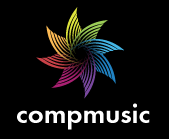Mining Melodic Patterns in Large Audio Collections of Indian Art Music
This is a companion page for:
Article
Gulati, S., Serrà, J., Ishwar, V., & Serra, X. (2014). Mining melodic patterns in large audio collections of Indian art music. In Proceedings of the International Conference on Signal Image Technology & Internet Based Systems (SITIS-MIRA), pp. 264–271. Marrakesh, Morocco
[Postprint manuscript (PDF@MTG)] [BibTex] [Slides]
Abstract
Discovery of repeating structures in music is fundamental to its analysis, understanding and interpretation. We present a data-driven approach for the discovery of short-time melodic patterns in large collections of Indian art music. The approach first discovers melodic patterns within an audio recording and subsequently searches for their repetitions in the entire music collection. We compute similarity between melodic patterns using dynamic time warping (DTW). Furthermore, we investigate four different variants of the DTW cost function for rank refinement of the obtained results. The music collection used in this study comprises 1,764 audio recordings with a total duration of 365 hours. Over 13 trillion DTW distance computations are done for the entire dataset. Due to the computational complexity of the task, different lower bounding and early abandoning techniques are applied during DTW distance computation. An evaluation based on expert feedback on a subset of the dataset shows that the discovered melodic patterns are musically relevant. Several musically interesting relationships are discovered, yielding further scope for establishing novel similarity measures based on melodic patterns. The discovered melodic patterns can further be used in challenging computational tasks such as automatic raga recognition, composition identification and music recommendation.
Code
Dataset
Results
!!!!!!!!!!!!TEMP!!!!!!!!! under construction
This is a support web page for a submitted article in SITIS (MIRA track) 2014.
Browse Melodic Patterns
All the melodic patterns resulted from the experiment (~80,000 seed patterns and ~63 million search patterns) can be browsed and listened here.
Note that after learning similarity thresholds from the expert feedback (described in the article), to assist in a meaningful browsing, we assign a check mark for melodically similar and cross mark for melodically dissimilar patterns. The thresholds are chosen to have minimal flase alarms.
Available Code And Data
Drop an email to for obtaining the code and the data (predominant pitch, tonic of the lead artists and expert annotations) used in the study.


